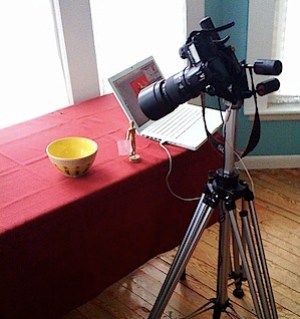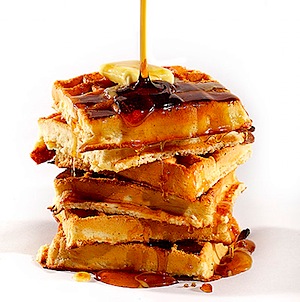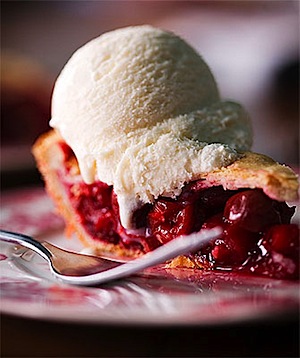Introduction
Steve Buchanan is a renowned commercial photographer based in Maryland. He is not only a talented photographer but also a contributor on Photocrati’s Photography Blog. If you’re interested in exploring his impressive portfolio, you can visit his website at www.buchanan-studios.com.
Equipment Recommendations for Food Photography
1. Canon or Nikon DSLR
When it comes to choosing a DSLR for your food photography endeavors, Steve Buchanan believes that any Canon or Nikon DSLR would be suitable. He emphasizes that the number of megapixels, video shooting capabilities, and full-frame or DX sizes matters less than your personal liking and comfort with the camera. While other brands like Sony, Fuji, and Pentax also manufacture excellent DSLRs, Canon and Nikon stand out due to their extensive user base and vast accessory range, which can be crucial in the future. Additionally, when it’s time to upgrade, Canon and Nikon generally have better resale value. As an established photographer, Steve’s primary camera of choice is the Canon 5D.
2. A Macro Lens
For capturing intricate details in food photography, a macro lens is essential. Although branded lenses from the camera manufacturers are generally considered the best, Steve mentions that there are reliable alternatives from aftermarket brands like Sigma and Tamron. However, it’s crucial to conduct thorough research on these third-party options as there have been occasional quality issues. He advises against using close-up filters that screw into the front of a lens, as they often compromise sharpness and the flatness of field. Steve’s personal favorite is the Canon 100mm f/2.8 Macro.
3. A Good Tripod
In food photography, gradually building the perfect image through test shots is a common practice. Hence, a sturdy tripod is a must-have. Steve underlines one often overlooked specification when selecting a tripod: the minimum height when in use. Although he owns multiple tripods, his most frequently used one is the Bogen/Manfrotton 3001 with a 3035 head. Despite being a relatively lightweight tripod, it accommodates shooting at standard table height, which is typically around 30 inches, often necessary when shooting in restaurants.
4. Homemade Reflectors
Creating reflector cards is a cost-effective way to enhance your food photography. Steve recommends visiting an art store and purchasing a couple of half sheets of fomecore and silver boards. With a utility knife, you can easily cut them to the desired shape. To keep the reflector cards in place, using funtak adhesive and a couple of artists manikins can be very effective. This DIY solution allows you to control and manipulate lighting to achieve desired effects in your photos.
5. A Computer Workstation Capable of Shooting Tethered
In terms of your workstation setup, shooting tethered can significantly improve your food photography workflow. While Steve shoots with a Canon camera and uses EOS capture software that came along with it, he suggests checking if Nikon includes their Capture program as well. Being able to shoot tethered enables you to evaluate your shots more effectively on a laptop screen rather than relying solely on the small LCD viewer on the back of your camera. This capability proves invaluable when shooting, reviewing, and making necessary adjustments repeatedly to achieve perfect results.
6. A Color Checker
Accurate color reproduction is paramount in food photography. To ensure consistent and professional results, using a color checker is crucial. Steve recommends products like the Expodisc or a Macbeth color checker. Regardless of the brand, he strongly advocates shooting a color chart for every shoot. This step becomes even more essential when working with available light, as the color temperature may not match the preset white balances on your camera. Avoiding color casts, such as a green banana, is crucial in maintaining appetizing visuals.
7. Studio Strobes or Monolights
While not an absolute necessity, studio strobes or monolights provide additional control and versatility in food photography. The cost and quality of these lighting equipment options can vary depending on factors like usage frequency and durability. One crucial aspect to consider is the availability of diverse light modifiers compatible with your chosen system. According to Steve, his typical studio setup consists of 2 or 3 lights equipped with focused light modifiers like grid spots or snoots, accompanied by a soft fill light, typically a softbox overhead or slightly behind the subject.
It’s worth noting that the section discussing strobes is placed last, as it’s entirely possible to produce remarkable shots in food photography using available light and basic gear. Steve emphasizes that the first three recommended items on the list are sufficient for producing top-notch work. However, for those planning to enter the professional realm of food photography, additional equipment might be needed. Yet, it’s important not to let a lack of funds become an excuse to purchase expensive gear unnecessarily. Building skills and creativity should take precedence over acquiring the latest gadgets.
From the Editor (Darren Rowse)
Darren Rowse, a valued editor at Photocrati, expresses gratitude to Steve Buchanan for his informative and comprehensive post. Despite the potential for debate arising from Steve endorsing Canon and Nikon cameras, Darren welcomes civilized discussion and acknowledges that great images can be captured with a range of camera brands. Whether it’s Sony, Pentax, Sigma, or even Kodak, the ability to produce exceptional photographs is what truly matters. Ultimately, aspiring food photographers should choose the camera that aligns with their finances, personal preferences, and shooting situations, keeping their passion for photography alive.
The article is compiled and compiled by tipcamera.com






